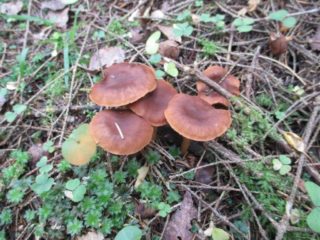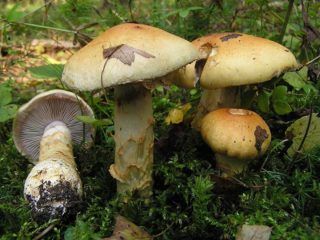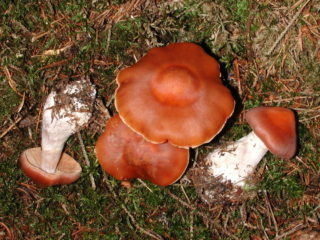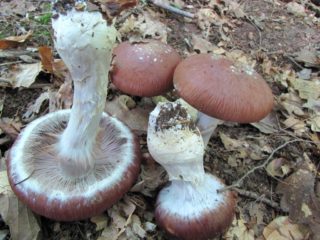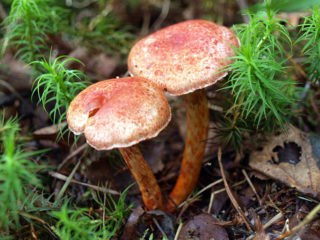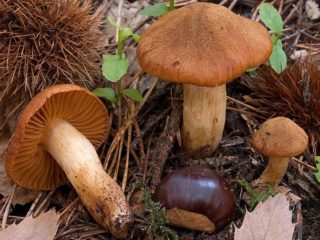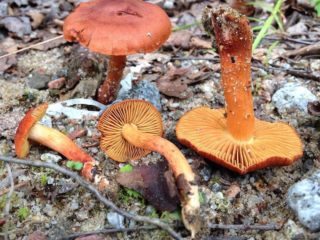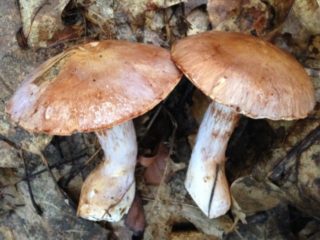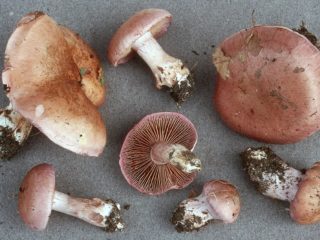Content
The edible cobweb belongs to the Cobweb family, whose Latin name is Cortinarius esculentus. You can immediately guess that the species in question is an edible gift of the forest. In common parlance, this mushroom is called fatty.
Description of the edible cobweb
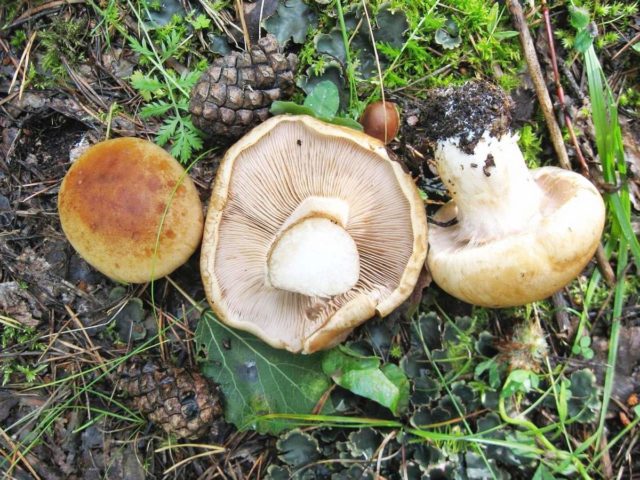
The mushroom prefers moist places, and therefore can be found along the edge of the swamp
The fruiting body of the plump one is presented in the form of a fleshy cap and a large stalk. The pulp of this specimen is particularly dense, has a mushroom aroma and a pleasant taste. Painted white, the tone remains unchanged when cut.
Description of the cap

Most often, the fat plant grows in large groups
At a young age, the cap of the edible cobweb is semicircular, with thin edges turned inward, but as it matures it acquires a flat-convex or depressed shape. The structure is characterized as dense and fleshy. The surface is smooth to the touch, watery, whitish-gray in color with brown spots. On the underside of the cap there are frequent, descending, clay-colored plates attached to the stem. The spores are ellipsoidal in shape, yellowish-brown in color.
Description of the leg
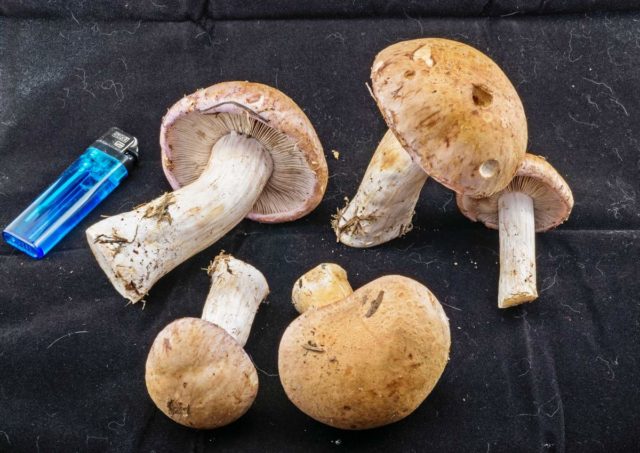
Old specimens of this species may superficially resemble a toadstool, but they can be distinguished by their pleasant aroma
The leg is straight, reaches no more than 3 cm in length, and the thickness in diameter is 2 cm. The structure is dense, without cavities. The surface is smooth, white or brown in color. In the central part there are cobwebby scraps, which are the remains of the bedspread.
Where and how does it grow
The favorable time for fruiting is the period from September to October. The edible cobweb lives in coniferous forests among mosses and lichens, and forms mycorrhizae exclusively with pine trees. This variety is widespread in Belarus, but is also found in the European part of Russia.
Is the mushroom edible or not?
This species belongs to the category of edible specimens. Many mushroom pickers note that the edible cobweb has a pleasant mushroom aroma and a sweetish taste.
Doubles and their differences
In terms of external features, the described gift of the forest is similar to the diverse cobweb. The double is a conditionally edible mushroom, but can be used for food only after preliminary processing.It differs from the specimen in question in having brown colored caps and a tuberous stalk at the base.
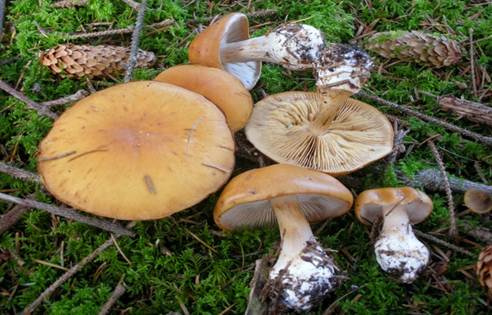
The pulp of the double does not have a pronounced taste or smell
Conclusion
The edible cobweb is quite popular among amateurs and professional mushroom pickers who understand these gifts of the forest and know their value. This specimen attracts with its large size, pleasant aroma and sweetish taste. This mushroom can be served as a main dish or side dish, but it is especially good when fried or pickled.
